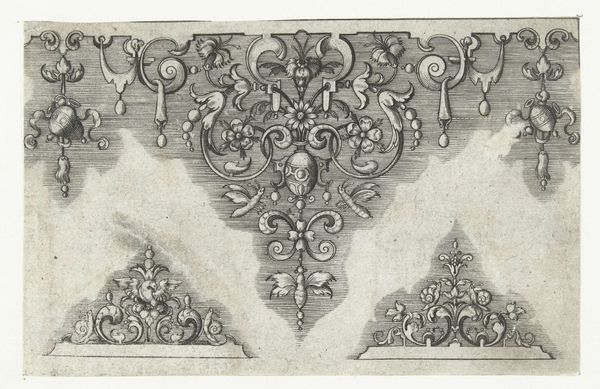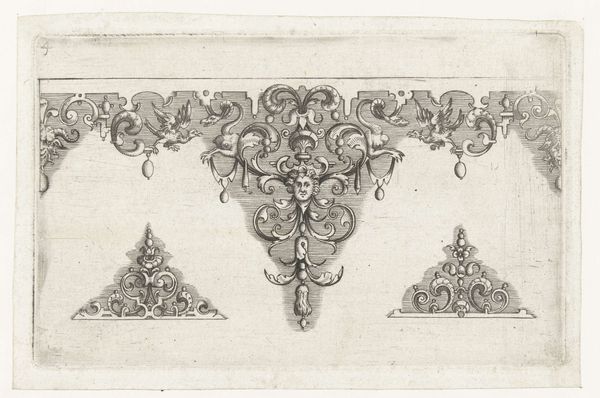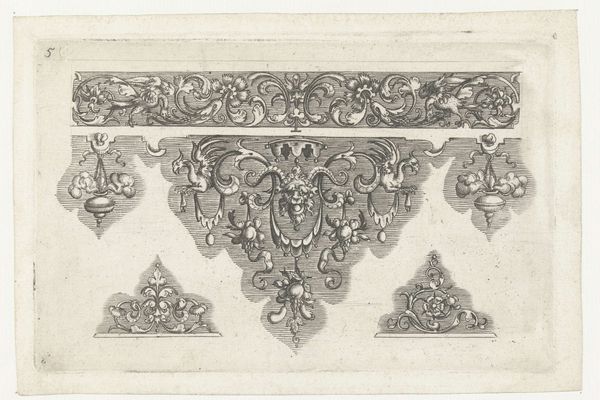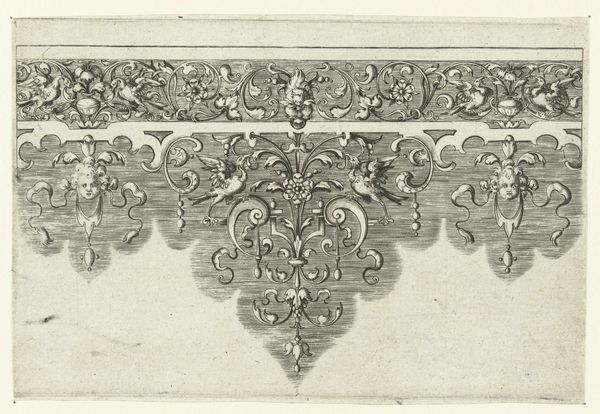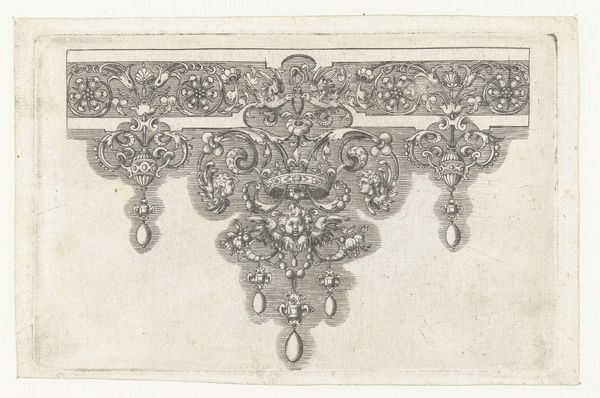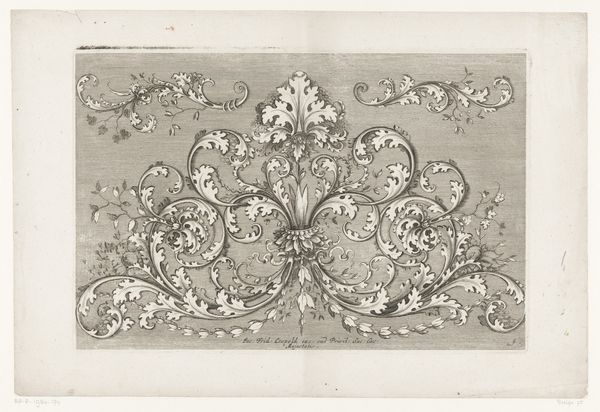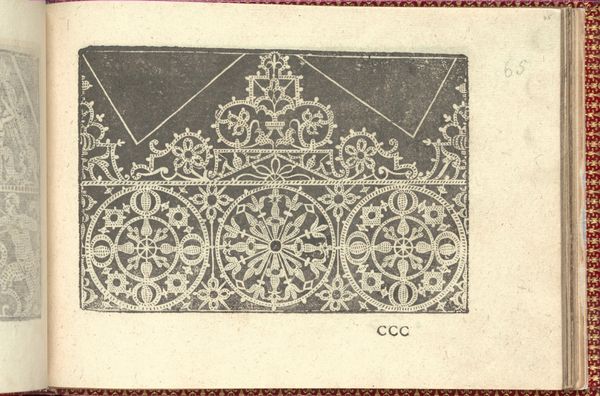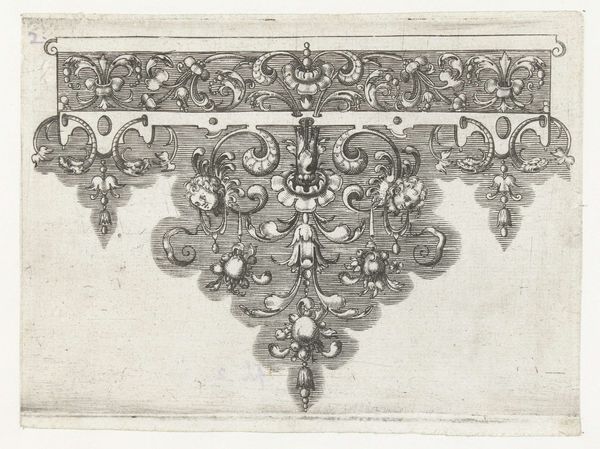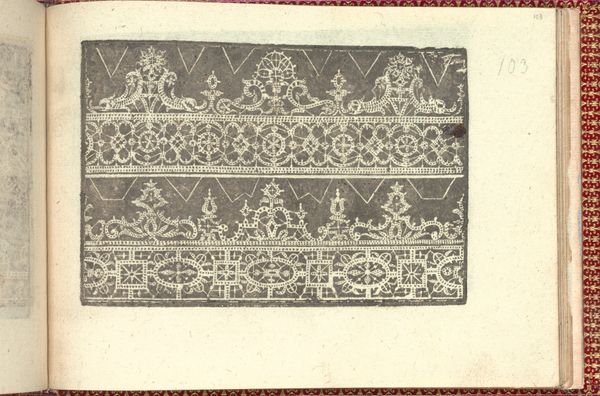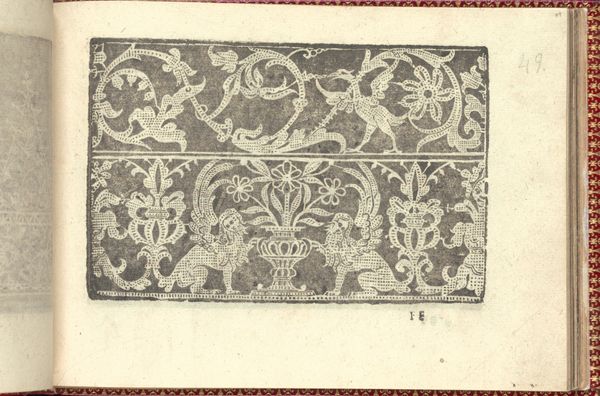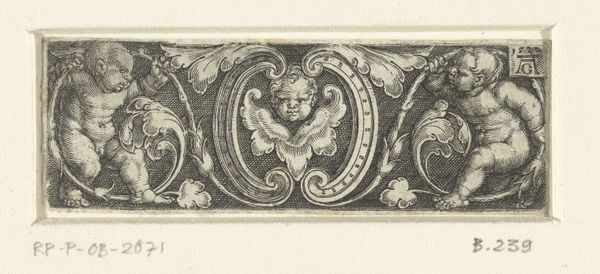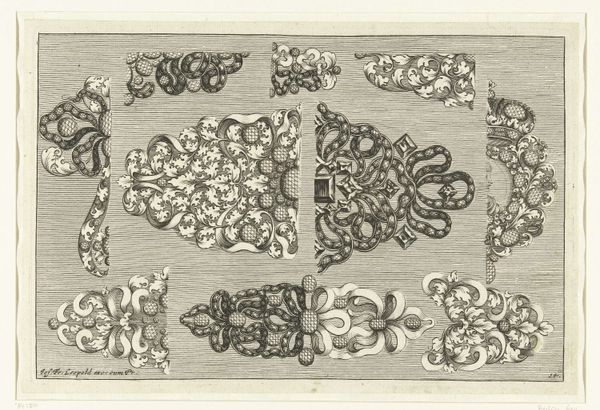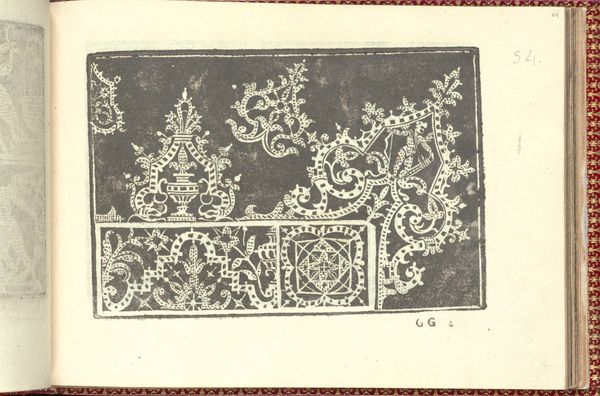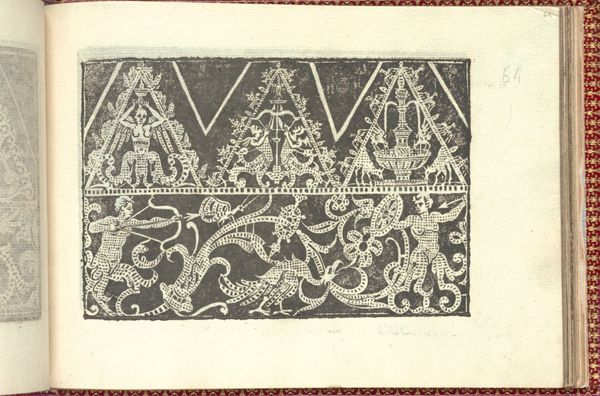
ornament, print, engraving
#
ornament
#
baroque
# print
#
old engraving style
#
decorative-art
#
engraving
#
intricate and detailed
Dimensions: height 94 mm, width 139 mm
Copyright: Rijks Museum: Open Domain
Curator: Here we have a beautiful engraving dating from the period 1571 to 1639. Its Dutch title is “Rand met in het midden een vaas,” and it is attributed to Paul Birckenhultz. It showcases a decorative, Baroque style ornament. Editor: Immediately, I see how intricately designed and meticulously crafted the composition is; its rhythmic movement of the floral motifs makes me think it would look amazing as a wallpaper! Curator: The detail is exquisite, isn’t it? Note the vase form that anchors the composition. It is surrounded by symmetrical floral patterns, droplets, and fantastical creatures. What do you make of the overall effect? Editor: Well, looking closely, the vase, adorned with a sort of grinning mask, is intriguing. And then the curious insect or flying-lizard hybrids tucked throughout – it all creates a slightly unsettling, almost gothic aesthetic, despite the elegance. Almost a dance of Eros and Thanatos in decorative form. Curator: Precisely! The dance you mention highlights a cultural continuity—a fascination with mortality expressed through symbolic ornamentation. These images, while appearing decorative, carry profound weight as cultural signifiers. The droplets, for instance, often represent tears or sorrow, subtly woven into the pattern. The vase in and of itself becomes a vessel for memories and rites. Editor: Thinking of vessels, who would have seen this print? Would it be artisans wanting pattern inspiration, or a collector who appreciated this style of decorative arts? In terms of accessibility, I wonder who would have been privy to its hidden symbolic language and to what end? What action might have arisen from observing it? Curator: Excellent question. Prints like these were circulated widely among artisans, yes, as models. So the impact extends beyond aesthetic pleasure – it shapes the material culture of the era. What begins as line and ink becomes form and object in the world. It highlights the intersection between high art and everyday life. Editor: Exactly. Thank you. That makes me want to start seeing it everywhere—the wallpaper in a merchant's home, for example, maybe with an element adapted as a motif stitched into someone’s cap. Fascinating to imagine its presence ripple outwards through time and craft. Curator: Agreed. Thinking about these layers has deepened my own appreciation. The intricate detail and dark symbolism certainly capture a moment in time.
Comments
No comments
Be the first to comment and join the conversation on the ultimate creative platform.
